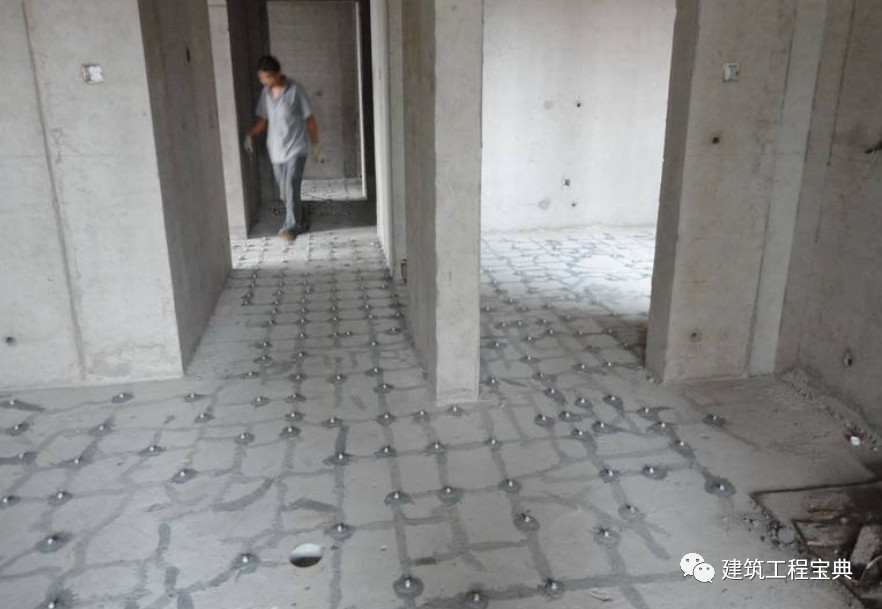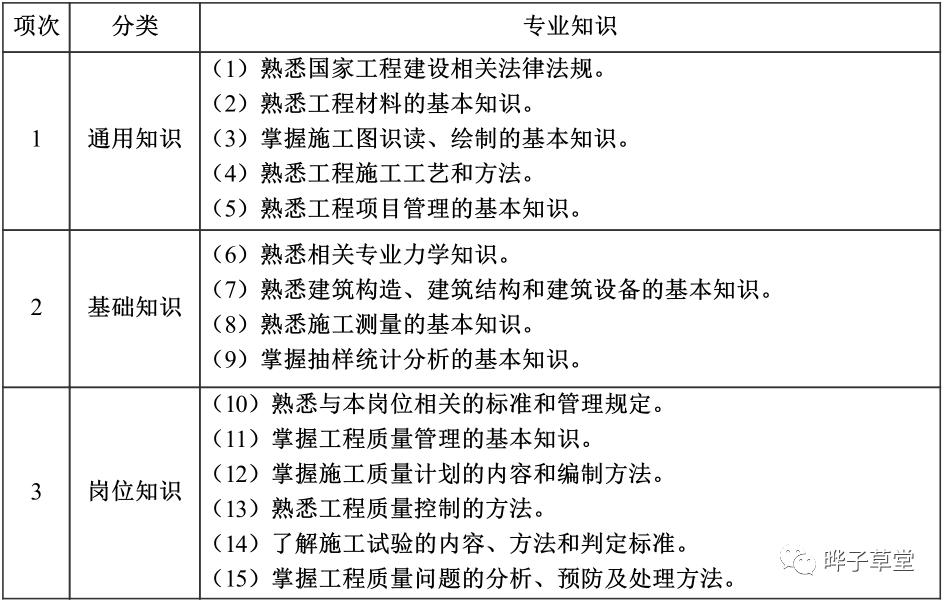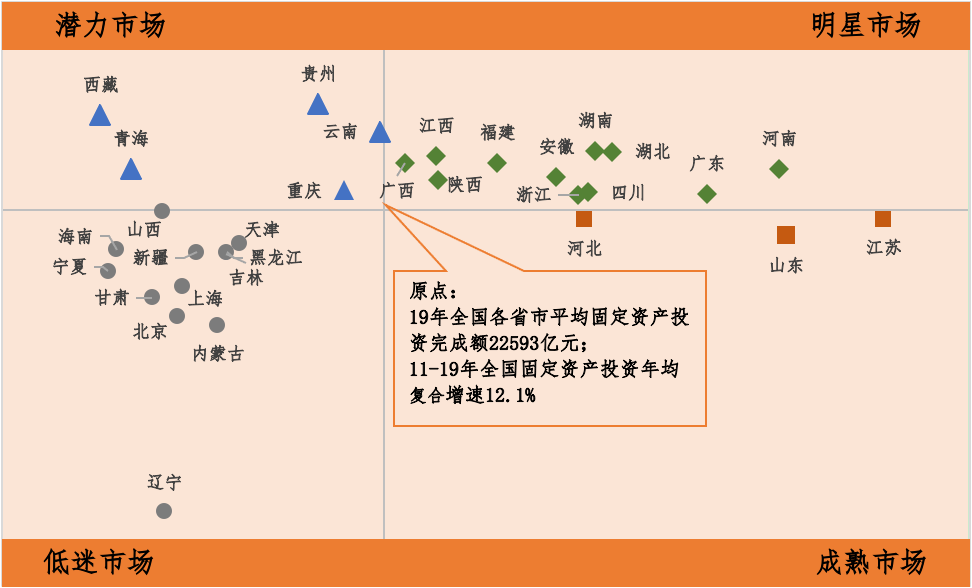When the diameter of the prefabricated pipe is small, the width of the room is small, and the laying direction of the pipe is not perpendicular to the shrinkage and tension direction of the concrete, the floor cracks will not occur
. 
If the water cement ratio is guaranteed, the amount of cement should be increased, so that shrinkage cracks appear in the hardening stage of concrete
.
From the design point of view, the current design code focuses on the strength, not fully considering the temperature difference and shrinkage characteristics of concrete and other factors, so the amount of reinforcement can not meet the requirements
.
Therefore, for the thicker pipeline or the distribution place of multiple pipelines, short steel mesh perpendicular to the pipeline should be added as required
.
Because the external corner of the building is constrained by the shear wall in the longitudinal and transverse directions or the floor beam with relatively large stiffness, the free deformation of the floor slab concrete is limited
.
In order to meet the pumping conditions, the pumping concrete has large slump and good fluidity, which is easy to produce the phenomenon of less coarse aggregate and more mortar
.
1.1 quality of concrete raw materials 1.1.1 abnormal setting or expansion of cement, such as unstable stability of cement, quicklime or magnesium oxide contained in cement, which will cause volume expansion and cracks after hydration
.
Therefore, it is very important to study the shape of cracks, analyze the causes of cracks and the impact of cracks on structural functions, and control them
.
Generally speaking, the cast-in-place slab cracks are: irregular, discontinuous surface micro cracks; surface cracks, longitudinal, transverse cracks and oblique cracks
.
1.1.2 if there is too much mud in the aggregate, irregular network cracks will appear as the concrete dries
.
Therefore, when the temperature difference and concrete shrinkage change, the slab surface cracks first at the weak reinforcement (that is, at the end of the negative bending moment reinforcement and radiation reinforcement of the separated reinforcement), resulting in an inclined angle crack of about 45 degrees
.
At this time, when the concrete is dehydrated and dried, surface cracks will occur
.
The calcium hydroxide in the cement slurry will react with carbon dioxide in the air to form calcium carbonate, causing the hydration shrinkage of the surface volume carbon, resulting in the surface cracking of the concrete slab.
.
Floor cracks caused by embedded pipelines: surface cracks appear along the direction of pipelines at the embedded pipelines; local irregular cracks are divergent or cracked
.
On the other hand, it is caused by the The shrinkage value of the floating slurry or mortar on the surface is much larger than that of the base concrete, resulting in different deformation values and cracking of the surface
.
Jianjiantong media ID: jianzhong001 most of the engineering quality accidents of reinforced concrete structure damage and collapse start from the expansion of cracks
.
Construction causes of concrete floor cracks: the maintenance is not in place, the mandatory specification requires that the concrete maintenance should be covered and watered, now most of them are not covered, and watering can not guarantee the frequent wetting; the construction speed is too fast, loading is early, especially for the brick concrete residential floor, when the floor is poured one day before, the brick is loaded and the car is driven the next day, resulting in early concrete damage; the formwork is removed too early or too late The results show that the rigidity of formwork support system is not enough; the concrete cover bar of floor slab is bent and stepped down during construction, the protective layer is too thick, and the bearing capacity is reduced
.
However, if the water spraying between the formwork and cushion is not enough and too dry, the formwork will absorb a large amount of water, which will cause the plastic shrinkage of concrete and produce cracks
.
1.2.2 after the concrete is poured and tamped, excessive dry polishing will make the fine aggregate of the concrete float to the surface, forming a cement slurry layer with large water content
.
At this time, the early strength of the concrete is low (the strength of the surface layer is lower), which can not resist the deformation stress and lead to the cracking of the concrete surface
.
The concrete with high silt content has large shrinkage and low tensile strength, which is easy to produce cracks due to plastic shrinkage
.
The embedded pipe, especially the distributing place of many pipes, is the weak place where the section concrete is weakened, which leads to stress concentration and cracks
.
In fact, as long as you carefully observe, it is not difficult to find that ordinary reinforced concrete structures are generally stressed with cracks
.
Most of the cracks are caused by cement floating layer and mortar layer
.
The stress crack, which is related to the load, indicates that the bearing capacity of the structure may be insufficient or there may be serious problems
.
The room at the external corner around the house is about 1 meter away from the external corner, that is, the floor inclined angle crack of about 45 degrees occurs at the end or outside of the negative bending moment reinforcement and corner radial reinforcement of the separated reinforcement of the floor
.
The shrinkage cracks of cast-in-place slab are mainly concentrated in the middle of the house and the external corners around the house, and the cracks end at the beam edge in the shape of jujube nucleus
.
The cracks are irregular in shape, different in length and incoherent with each other
.
Shrinkage cracks caused by the use of commercial concrete: due to the pumping of commercial concrete, the fluidity of concrete is better, so the slump of general commercial concrete is larger, and the water cement ratio is larger
.
1、 Types of concrete cracks: cracks caused by external load: structural cracks caused by external load generally have strong regularity, and correct conclusions can be read out through calculation and analysis
.
On the contrary, when the diameter of the embedded pipe is larger, the width of the bay is larger, and the laying direction of the pipe is perpendicular to the contraction and tension direction of the concrete, the floor cracks are easy to occur
.
The main reasons are construction, design and concrete raw materials, which will be analyzed one by one
.
1.1.4 the strength value of concrete with too large water cement ratio, slump or excessive use of silt is very sensitive to the change of water cement ratio, which is basically the superposition of the influence of the change of water and cement measurement on the strength
.
With the help of instruments, you can even find that cracks change all the time and change with the development of cracks As a result, the durability and applicability of structural components will be reduced in varying degrees, and even lead to the destruction of structural components
.
Temperature shrinkage crack: temperature shrinkage crack is one of the most common cracks in buildings, which is mainly caused by the temperature deformation of the structure, the obstruction of material shrinkage deformation and the excessive stress
.
The cracks caused by uneven settlement are mostly penetrating cracks, and their strike is related to the settlement
.
The reason is mainly caused by the shrinkage characteristics of concrete and temperature difference, and the closer to the roof, the greater the floor cracks
.
Although the floor diagonal cracks have no impact on the safe use of the structure, but in the case of water leakage will occur, affecting the normal use
.
Cracks caused by uneven settlement of foundation: due to the uneven settlement of foundation, the superstructure produces additional stress, resulting in floor cracks
.
Analysis of the causes of reinforced concrete cast-in-place slab cracks
.
2、 The causes of concrete cracks: 1
.
Therefore, the measurement deviation of admixture solution of water, cement and extravasation mixture materials will directly affect the strength of concrete
.
For example: the cracks on the surface of the rectangular floor slab form a ring, distributed along the frame beam, and the cracks on the bottom of the slab form a cross or meter shape concentrated in the middle of the span; the cracks on the corner balcony or overhanging eaves slab start at the junction of the wallboard, and extend outwards in meter shape with the corner point as the center
.
1.1.3 alkali aggregate reaction: alkali aggregate such as protein, andesite, Xuan Wuyan, diabase and phyllite may react with alkali strong cement to form alkali silica gel with expansive capacity, causing expansion and destruction of concrete and cracking
.
Most of the cracks occur in the early stage of concrete pouring, that is, about 4-6 hours after pouring and tamping
.
On the one hand, due to the rapid evaporation of free water on the surface during the initial setting of the concrete, the rapid volume shrinkage occurs
.
1.2 construction quality 1.2.1 after the concrete construction is over vibrated and the formwork and cushion are too dry, the coarse aggregate will sink and squeeze out the water and air, and the surface will show bleeding to form the vertical volume shrinkage settlement, resulting in the surface mortar layer, which has greater drying shrinkage performance than the lower concrete, and it is easy to form condensation cracks after the water evaporates
.




